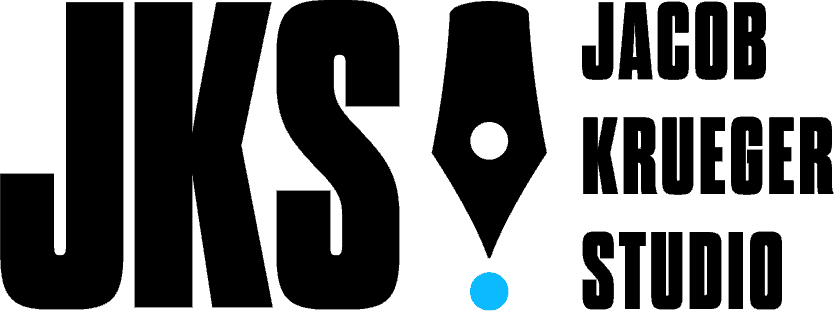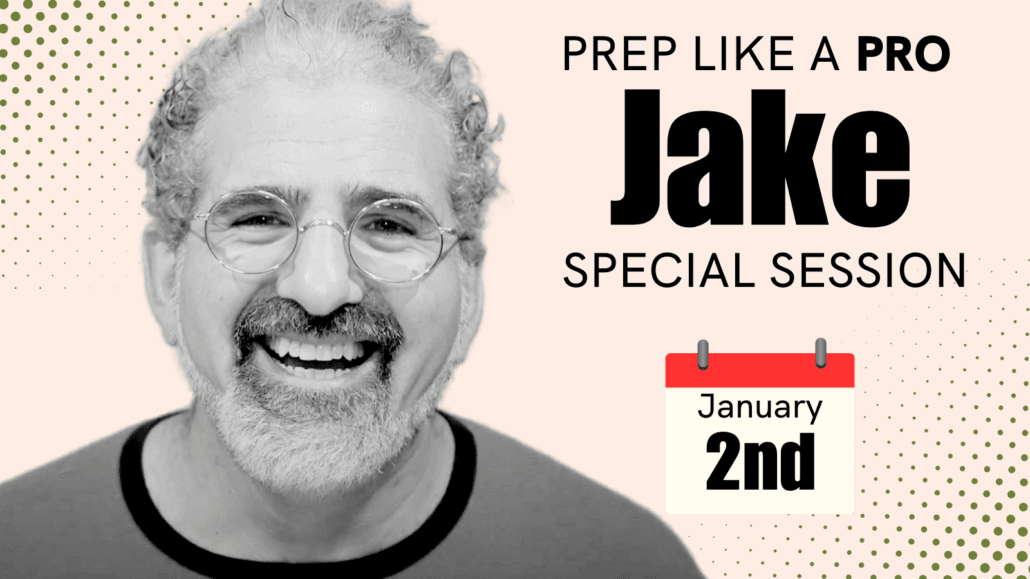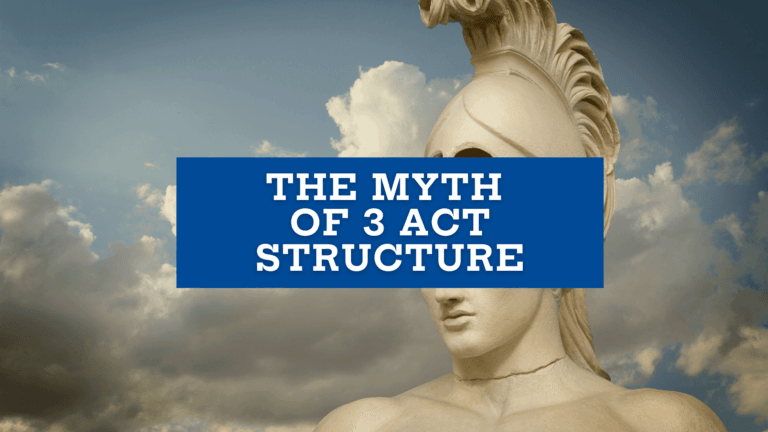Love on the Spectrum: Understanding Subtext
Subtext is one of those things that screenwriters get so freaked out about! Almost every screenwriter is scared that their dialogue isn’t good enough or that their dialogue isn’t real enough. We all have those words echoing in our ears from some screenwriting teacher: “It’s too on-the-nose! It’s too on-the-nose!”
We’re all terrified of writing this “on-the-nose” dialogue. But sometimes we don’t even actually know what “on-the-nose” is. We know it’s this bad thing, and we know that subtext is supposed to be this good thing. We’re afraid that our dialogue is bad, and we want our dialogue to be good.
So, this raises the question, “what is subtext?”
What is on-the-nose dialogue? What’s good dialogue? How do you even do it?
To talk about it, we’re going to discuss a really fabulous show. It’s a different show than most of the shows that I’ve talked about in that it’s a documentary format reality show on Netflix called Love on the Spectrum.
This reality show is beautiful on so many different levels. What it does is take autistic adults, many of whom have struggled in relationships, many of whom have never even been on a date before and who long for love and for romance and connection, and it pairs them with other autistic adults. For many of them it is their first date ever. And the show tries to help them, through relationship training, to actually find love.
The reason I thought Love on the Spectrum be such an interesting show to discuss writing subtext is because it features characters who seem incapable of subtext; characters whose dialogue seems to always be “on-the-nose.”
These are characters who literally say exactly what they’re feeling. Because of this, Love on the Spectrum seems to do away with these layers of dialogue that we’re always expecting.
(As I’ll discuss later in this podcast, there actually is a surprising amount of subtext happening in these scenes, but let’s start with what’s on the surface)
One of my favorite interchanges takes place between a couple, Ronan and Katie. They are both on the first date of their lives. And that date actually ends up blossoming into a really beautiful love affair. And it features dialogue that kind of sounds like this (paraphrased):
“How do you feel about me?”
“I feel warm.”
“I feel warm, too.”
We wish we could be so honest on a date with someone we just met! We wish we could be so vulnerable! On our real dates we’re filled with wordplay and little games and showing how cool we are and hiding our true feelings. In Love on the Spectrum, these characters just come out and say it.
In fact, they need to say it. They need to check in with each other and they need it reported because they struggle to pick up visual and subtextual cues. The result is the exact opposite of what you might expect. You’re not experiencing the scene as cheesy, “on-the-nose” dialogue. What you’re actually seeing is something beautiful and connected and special.
Which leads us to our first lesson about understanding subtext in dialogue: Sometimes it’s better just to say it.

There’s something actually really beautiful and powerful about letting a character come out and say what they feel.
I’m reminded of a wonderful improv teacher I used to study with, one of my mentors. We’re placed in a scene and it’s obviously a seduction. Like most inexperienced improv actors, we’re kind of dancing around with subtext and trying to be funny as we try to seduce each other.
And on the sideline, here is my mentor coaching me: “Just say it! Just say it!” So finally I say, “I want to sleep with you.”
And everybody laughs. Suddenly, the scene takes off. And I realized at that moment that I was so busy trying to be a “good improv actor” – trying to find those complicated subtextual ways to communicate good dialogue – that I was actually missing the joke.
More importantly, I was missing the emotional content of the scene.
Sometimes it’s okay to just say it. Sometimes there’s value in allowing your character to be vulnerable, to put it all on the table, and to say exactly what they feel.
Sure, there is a risk that the dialogue can sort of feel “on-the-nose” (and we’ll talk about what that means). But sometimes you’ll be pleasantly surprised to find out that “just saying it” really leads to deeper levels, more complexity, and even more subtext.
Bringing it all the way back to Love on the Spectrum: Despite the fact that these two characters seem to have no ability to do subtext, there’s actually a lot of subtext happening between them.
For example, in Season 2, Episode 2, there’s a really beautiful moment early in Katie and Ronan’s date. They’ve never been on a date with anyone, and they are both so nervous, and they have their first early conversation, and it’s going well, and Ronan realizes it and says, “isn’t it romantic?”
And she says, “yes.”
So this is one of those apparently subtext free moments we were talking about. It’s so beautiful and simple! Neither one of them knows what to say because they both struggle with simple conversation. They’re both scared out of their wits, and they both like each other, but they don’t actually know how to connect.
So Ronan decides to pour some juice for the two of them while they’re out on their picnic. He pours one for her and one for him, and they drink, and they keep drinking, and they keep drinking, and they keep drinking the juice.
And even though it’s not dialogue, it is subtext.
Because the conversation that’s actually happening is not about juice. The conversation that’s actually happening is more like this:
“I’m nervous.”
“I’m nervous, too. Maybe it would calm us down to have some juice.”
“Yeah, that would fill some time.”
“I really want to connect with you in this way.”
“Yeah, I really want to connect, too.”
“I don’t know what to say.”
“Okay, let’s see if we can fill some time together this way.”
If you’re watching, you’re laughing, but not at them. You’re laughing with them because you’re in on what’s happening between these two people, which is two people, scared to death who so desperately want to connect and don’t exactly know how.
The text is, “would you like some orange juice.” But the subtext is something so much more complicated. I’m going to play you another scene that does the same thing. This is from 10 minutes and three seconds into Episode Two.
KATIE: “Um, Thank you for today.”
RONAN: “Yeah. I hope you enjoyed our dates today.”
KATIE: “Yeah, I um… thought it was really great.”
RONAN: “Yeah, pleasure meeting you.
KATIE: “Yeah, me too. This was a good time.”
RONAN: “Like, I bet your mom is, like, waiting for you somewhere up in that direction where I’m pointing.”
KATIE: “Yep.”
RONAN: “Yeah.”
KATIE: “All right. Thank you.”
RONAN: “Yeah, my pleasure.”
KATIE: “Bye.”
RONAN: “See ya later, Katie.”
Here’s what’s so incredible about this scene:
When you’re watching this scene, you’re watching this girl who is waiting for the kiss at the end of the first date.
And you’re watching this boy who is afraid to kiss her and doesn’t know what to do.
The text is, “thanks for a nice date. That was nice. I think your mom’s out there.” That’s what the text is. “Thank you. Thank you.” That’s the text that we’re hearing.
But when we’re watching visually, the subtext is:
“Would you like to kiss me?”
“I don’t know what she wants from me.”
“Would you like to kiss me?”
“What’s the right thing to do at the end of the date?”
“Would you like to kiss me?”
“I feel nervous. I need to end this.”
“Would you like to kiss me?”
“Maybe she doesn’t know where her mom is? Or maybe I can get out of this. Your mom’s up there.”
“Would you like to kiss me? I had such a nice time.”
That’s the actual subtext going back and forth between these two people who seem like they can’t do subtext.
And this conversation is beautiful! It’s beautiful because both of these characters are so vulnerable. But it’s also beautiful because we can feel what they want. We can feel the action that’s happening between them.
We realize that even these two people, who just speak what’s on their mind, like all people, like all human beings, are actually doing subtext all the time.
Which means you’re doing subtext all the time.
Which means you don’t have to stress so much about subtext.
To understand subtext, you have to understand that subtext is not something you do consciously. It’s something you do unconsciously.
Sure, some people play games using subtext on purpose. Some people use subtext in order to hurt, raise status, lower status, impress, cajole, trick, dupe, create guilt, etc. They use subtext as a weapon. And maybe that’s the kind of writing that you do, or maybe it’s not.
But you’re using subtext, too, because even in a simple scene like this, there’s subtext going on. There’s subtext going on naturally and inevitably because our language does not communicate the full depth of our wants, our emotional needs, and our feelings.
The language that we speak is simply not capable of communicating all the levels of what is going on inside of us all the time. And because our language isn’t capable, subtext naturally evolves.
My belief is that the real reason that people have trouble understanding subtext is because people have trouble understanding dialogue.

So many writers don’t actually understand how to write dialogue because they think dialogue is people talking to each other.
I’m here to tell you that it’s not true.
That might be the dictionary definition that you find if you look up the word “dialogue.” But in the real world, that’s not how dialogue works, and that’s why it doesn’t work like that in the movies or TV, either.
Most dialogue is a form of action.
It’s a way that characters like you and me, and Ronan and Katie, try to get what we want against tremendous obstacles, internal fears, internal monologues, internal conflicts, internal pressure, and the “full rainbow of desire” (to quote Augusto Boal) that exists inside of ourselves.
Dialogue is just a tool we use in an attempt to meet our wants and emotional needs.
Now you may say, “Well, that’s not true. Sometimes, I just make small talk!”
But think a little bit more about your small talk and you’ll probably realize that there’s want and emotional need underneath it. Because as you’re making small talk, you might be thinking, “does she think I’m cute? Does she think I’m smart?”
You might be thinking, “I want to make her feel comfortable. I want to make her feel happy. I want to make her laugh.”
You might be thinking, “I want to connect.”
You might be thinking, “I want to break the ice.”
You might be thinking, “I want to relieve the tension.”
You might be thinking, “I want to steer the conversation away from that subject.”
You might be writing a whole monologue in your head that you’re trying to cope with or escape. And the person you’re talking to is writing a monologue in their head, too.
You might have an image of where the experience is going that you’re hoping to navigate towards. Or you might have a fear of where it might end up that you’re trying to navigate away from.
Then we try to use this tool called language in the same way we would try to use the tool called action in a screenplay. And like everything else in a screenplay, and in life, it’s driven by emotional needs and tangible goals.
Dialogue ain’t talk. Dialogue is a way of getting what you want. It’s a tool.
So, where does subtext come from?
Subtext comes from the pressure between the words we’re saying and the real wants and needs lying underneath.

Sometimes, subtext exists consciously where a person is being playful or twisted or complicated, and is consciously saying something that contrasts with what they mean.
There’s a great scene in American Beauty. Carolyn is on the couch, and Lester is seducing her by saying bad things about her. He’s actually putting her down. But the action is to seduce, and he knows he’s seducing, and she knows he’s seducing, and they’re playing a little verbal game together. And it’s conscious, it’s not an accident.
There are other times when subtext happens on a much more unconscious level. When there is some kind of pressure between the want and the need in the person.
Say the want is a cup of coffee, but the need is love. The person’s talking about coffee and all the text has to be about coffee, but the subtext is, “Love me! Love me! Love me!”
The way you write that is not to consciously think about it. You’re not trying to be Oscar Wilde and find the perfect wordplay. What you’re doing is feeling “Love me! Love me! Love me!” as you write the character, but you’re pushing that need down, and you’re focusing the attention on the coffee cup…
…just like Ronan and Katie are pushing the anxiety down and focusing on the orange juice.
Or like Ronan, in the scene that I shared with you, is pushing the anxiety down by talking about where Katie can find her mom. And Katie is pushing down the desire for the kiss – “Kiss me, kiss me, kiss me” – by simply repeating everything he says.
One of the ways we find subtext is by consciously playing with subtext. But not every writer is like that because not every person is like that. Not every person is engaged in wordplay all the time. Not every person is finding the most interesting and intellectual way to say things. Not everybody’s playing games all the time with their language, not consciously.
Sometimes writing subtext comes from noticing the difference between the want and the emotional need… the ways the want and the emotional need don’t line up.
You can write subtext intuitively if you will just let go of your desire to write great dialogue, and instead simply focus on the pressure between the wants and needs that are driving them
Feel, “Love me! Love me! Love me!” and let them talk about coffee.
Or feel, “I want to leave. Leave me alone,” as they talk about what a wonderful night it was.
Or feel, “I hate you,” as they talk about how beautiful their relationship is.
Feel the difference between the want and the need, between the line that is being expressed on the surface and the emotion that’s being repressed underneath.
Sometimes writing subtext is about feeling two wants at the same time.
You’ve all been in this situation: You’ve broken up with the love of your life. It’s over! You have had it!
And then you realize she still has your sock.
She still has your sock that you need!
How dare she keep that sock! That sock was a gift from your mother! You’re never going to feel closure. Not until you get that sock back.”
So you go to your former love’s apartment to let her know this relationship is over and you want your sock back!
But there’s another desire driving you that you are not conscious of, which is your desire to get back together with the love of your life.
Or to reconnect.
Or to feel something.
Or to provoke a reaction.
Or to feel that emotional thing you had before..,
Which is why you somehow end up sleeping together and getting back together,. even though you came to end the relationship by finally reclaiming your sock.
Sometimes, subtext is a conscious game. “Look how witty I am. Look how skillful I am. Look, I can use my words like a rapier.”
Sometimes, subtext is a difference between emotional need and tangible goal.
Sometimes, subtext is about two wants existing in a character at the same time; the one they’re expressing, and the one they might not even be consciously aware of.
There are thousands of different forms of subtext. But the important thing to remember is that subtext always exists with tension. It always exists with pressure, and it always exists naturally in all of us.
None of us are ever fully one thing at one time. We all have layers. We all have monologues playing in our heads, we all have visions that we share, and that we don’t share.
And what I’d like to empower you to do as you’re writing dialogue is this: Instead of trying to focus on making subtext, I’d like you to focus on the conflicts that exist inside your character.
What are the things that they are willing to say and that they’re not willing to say?
What are the defense mechanisms that get in the way of being honest?
What are the moments where they fully let it out and make themselves vulnerable?
What are the moments where they push something down?
If you can connect to the thing that the character is pushing down…
or the thing that the character wants to say but cannot let themselves say…
or the thing that the character is directing their mind towards to avoid the real want…
or if you can connect to the real want or the real need underneath the words that are spoken…
…you will find all the subtext you need in all the places that you need it.
While there are a million different ways to do this, and a million different ways to explore it, this is really just brushing the surface of how to write subtext.
So, for now, just keep in mind that writing dialogue is intuitive because you do it every day. And that means writing subtext is intuitive, too.
That means that there are conflicts in you that you are consciously and unconsciously aware of.
There is pressure in you that you are consciously and unconsciously aware of.
The more connected you get to these different levels of desire and the failure of language to communicate them, the more you’ll get in touch with your own subtext; the more you’ll get in touch with the thing that you’re really pursuing when you think you’re pursuing a sock, or a cup of coffee, or directions on how to find mom, or a kiss.
As wonderful as subtext is as a tool for screenwriting, and as a tool that we want to use, I want you to play with this idea: What if you stop being so afraid of writing “on-the-nose” dialogue?
Because the reason that writing “on-the-nose” dialogue doesn’t work is usually not because “on-the-nose” dialogue is wrong.
It’s usually because “on-the-nose” dialogue isn’t vulnerable.
It’s usually happening when the writer is trying to indicate what the character is feeling rather than actually feeling it with the character.
It usually happens when the character is trying to explain what’s going on inside the character as opposed to actually feeling it inside the character.
So next time you’re worrying about whether your dialogue is too “on-the-nose,” what I’d suggest to you is this:
Stop worrying.
Instead, go inside and feel and ask yourself, “Is my character being vulnerable? Or is my character trying to be clear?”
“Is my character expressing the complicated rainbow of desire that lives inside of them in the best words that they have, knowing that words will never fully capture it? Or am I, as the writer, trying to control and shape the experience in order to create an emotional reaction out of the audience? Am I trying to produce some kind of impression of a brilliant writer capable of mimicking the sounds of wonderful dialogue?”
“Am I inside or am I outside?”
If you’re outside, well then just say it! See what happens if you just say it and get in touch with what your character really wants without worrying about subtext at all.
And if you’re inside, then feel that pressure between what words can communicate and what’s really going on in your character and you will find all the subtext that you need.
Come study with me! You can do it for free every Thursday night as part of our weekly Thursday Night Writes event. If you want to make a donation, we will match every dollar that you give and use it to help students who otherwise couldn’t afford to attend our programs. If you can’t make a donation,come with a smile. Come join our community. Bring your creativity, bring your questions. It’s an amazing experience.
And if you want to get more serious; if you want to take our Foundation Classes; if you want to join our Master Class or our ProTrack mentorship program that pairs you one on one with a professional writer, you can find all of that on my website, writeyourscreenplay.com.
And please remember to follow and review. You are the people who keep us going.
*Edited for length and clarity



